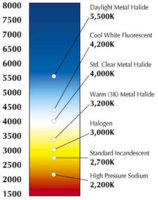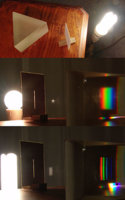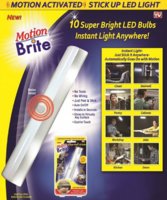Sorry, DE, that's "metric shit-ton"...
-
Enjoy XS650.com? Consider making a donation to help support the site.
XS650.com receives a small share of sales from some links on this page, but direct donations have a much greater impact on keeping this site going.
You are using an out of date browser. It may not display this or other websites correctly.
You should upgrade or use an alternative browser.
You should upgrade or use an alternative browser.
Shop Lighting Tip
- Thread starter Downeaster
- Start date
racerdave
^ Gone not forgotten ^
Just had a 2-tube 4' fluorescent go out.
Gonna try a 4' LED.
Friend of mine heard of my cooking learning dilemmas, and gave me this.
View attachment 115387
I guess these are smaller than "bunch", on DE's scale...
That pinch spoon is a lot bigger than what my pinch is.
Ah yes, I'd forgotten about the metric shit-ton. Thanks for reminding me.
I need a set of those measuring spoons for SWMBO.
I need a set of those measuring spoons for SWMBO.
mike in idaho
XS650 Addict
I've been switching over My 4 foot fixtures to these: https://www.amazon.com/Hyperikon-Co...rd_wg=t2DgU&psc=1&refRID=232RCYNPW8D2H059KX0B Five year warranty, you can remove the ballast(takes five minutes) or leave it in place. About ten bucks each.
glennpm
Another Old Biker Nut!
Hey downeasta' I think you missed one:
a boot load
Don't know where it would fit in the order though ;-)
Glenn from Wiscasset
a boot load
Don't know where it would fit in the order though ;-)
Glenn from Wiscasset
glennpm
Another Old Biker Nut!
BTW, I switched my three 8' long, two bulb T12 units to Hypericon no ballast LED type two years ago and they're fantastic. Instant on regardless of how cold it is in the garage!
Last edited:
racerdave
^ Gone not forgotten ^
I've had 1 LED over the main workbench for several years. this thread inspired me to bite the bullet and replace my other 4, 4 ft twin tube fluoro's with 5000 lumen 4 ft leds. Farm and Fleet has them on sale for $25. Plenty of light for these old eyes in my 14x22 garage.
rick1956
Just a regular guy.
I'm enjoying this thread and its related testimonials, but there's one thing I haven't heard a peep about (or if it was discussed I missed it): Color.
What color are these LED strips putting out? Are they garish white, warm yellowish, nasty greenish, blueish... what's everyone's take on the color of light they emit?
I want light that is between white and yellow, but nicely bright. I get that everyone has the "bright" covered, but the quality of light is huge to me. The last thing I want is tired eyes because of my shop lighting. Some "blues" tend to almost vibrate when you look at them (some headlights come to mind).
Thanks guys--rock on.
What color are these LED strips putting out? Are they garish white, warm yellowish, nasty greenish, blueish... what's everyone's take on the color of light they emit?
I want light that is between white and yellow, but nicely bright. I get that everyone has the "bright" covered, but the quality of light is huge to me. The last thing I want is tired eyes because of my shop lighting. Some "blues" tend to almost vibrate when you look at them (some headlights come to mind).
Thanks guys--rock on.
I'm not familiar enough with color temperatures and such to give a scientifically meaningful response but I will say the LED's I'm using are very white. As far as I can tell with my worn out old eyes, there's virtually none of the yellow tint common with incandescent bulbs.
They're even somewhat whiter than my modern electronic ballast fluorescents and decidedly brighter and NO flicker which I always found annoying with fluorescent lighting.
They're even somewhat whiter than my modern electronic ballast fluorescents and decidedly brighter and NO flicker which I always found annoying with fluorescent lighting.
I've been going with 6700K which is as about as white as you can get without going blue. The 6700 LEDs are definitely brighter than my old 6700K T8s. Since they are on clearance at Lowes I went and bought them out so I can convert the rest of my lights over.
I'm enjoying this thread and its related testimonials, but there's one thing I haven't heard a peep about (or if it was discussed I missed it): Color.
What color are these LED strips putting out? Are they garish white, warm yellowish, nasty greenish, blueish... what's everyone's take on the color of light they emit?
I want light that is between white and yellow, but nicely bright. I get that everyone has the "bright" covered, but the quality of light is huge to me. The last thing I want is tired eyes because of my shop lighting. Some "blues" tend to almost vibrate when you look at them (some headlights come to mind).
Thanks guys--rock on.
That's a good point. My workshop is currently lit with a 50/50 mix of daylight white and warm white fluoros, because that's the way I like it.
When it comes to LEDs, I don't want a glaring white garishness about the place.
Yes color matters in home use, I replaced the incandescent ceiling lights in the van with LEDs and they are OK but too "blueish" for a comfortable homey feeling. All the A60 LED replacements I've been buying for the house have a decent 5000k ish? color. Changing 60 watt bulbs to LED is a no brainer now. I think the power companies are subsidizing the bulbs at the local stores, 4 for about $7.00
racerdave
^ Gone not forgotten ^
Yes color matters in home use, I replaced the incandescent ceiling lights in the van with LEDs and they are OK but too "blueish" for a comfortable homey feeling. All the A60 LED replacements I've been buying for the house have a decent 5000k ish? color. Changing 60 watt bulbs to LED is a no brainer now. I think the power companies are subsidizing the bulbs at the local stores, 4 for about $7.00
What are you doing in that shagin wagon that you need a "homey" feelin

 ?
?DanielBlack
XS650 Junkie
There's color temperature, measured in Kelvin, and also CRI, measured on a 100pnt scale. Both are important in finding the right light source for the given job.
Color temp refers to the color of the light itself. Shining on a white surface or looking at a headlight as it comes down the road, what color "white" it is. This is the "white balance" adjustment on your camera.
Colors are exaggerated:

CRI, color rendering index, refers to how well colors show up when lit by a given source. This is particularly important for some tasks such as reading spark plugs, sussing a 40yr old wire harness, or knowing when to pull the t-bone off the grill.
When talking light we're talking additive color mixing. White light being the mix of all colors in the visible spectrum. Incandescents and other sorts of natural light sources produce light smoothly across the spectrum. Most LEDs produce only certain slices.

The missing chunks may not be visible to the eye when looking at the light itself, but they do become visible when reflected off objects. Missing the full spectrum, the objects' color seems 'off' or muted.

When choosing an LED fixture, ask the following questions:
How bright? Lumens
How homey, cozy, natural, focused, awake, do I want to feel? Color Temp
How important is it that colors look true? CRI
The X factor is that all three of these numbers are somewhat subjective and can be an inaccurate judge between manufacturers or even product lines.
Now, in my line of work, we add in the want of smooth dimming to 0%. Most LEDs, even those labeled ''Dimmable", do not. But the good ones keep getting better. Some of the best will 'amber shift' their color temp when dimmed, just like an incandescent. Sexy. But here we're talking $1500 for a single 1000w equivalent theatrical spotlight.
A really good commercial task light, a T8 replacement, can be easily north of $150 per 4' fixture. This would have options of brightnesses and color temps, all with a CRI 87-92. That's pretty damn good.
Color temp refers to the color of the light itself. Shining on a white surface or looking at a headlight as it comes down the road, what color "white" it is. This is the "white balance" adjustment on your camera.
Colors are exaggerated:

CRI, color rendering index, refers to how well colors show up when lit by a given source. This is particularly important for some tasks such as reading spark plugs, sussing a 40yr old wire harness, or knowing when to pull the t-bone off the grill.
When talking light we're talking additive color mixing. White light being the mix of all colors in the visible spectrum. Incandescents and other sorts of natural light sources produce light smoothly across the spectrum. Most LEDs produce only certain slices.

The missing chunks may not be visible to the eye when looking at the light itself, but they do become visible when reflected off objects. Missing the full spectrum, the objects' color seems 'off' or muted.

When choosing an LED fixture, ask the following questions:
How bright? Lumens
How homey, cozy, natural, focused, awake, do I want to feel? Color Temp
How important is it that colors look true? CRI
The X factor is that all three of these numbers are somewhat subjective and can be an inaccurate judge between manufacturers or even product lines.
Now, in my line of work, we add in the want of smooth dimming to 0%. Most LEDs, even those labeled ''Dimmable", do not. But the good ones keep getting better. Some of the best will 'amber shift' their color temp when dimmed, just like an incandescent. Sexy. But here we're talking $1500 for a single 1000w equivalent theatrical spotlight.
A really good commercial task light, a T8 replacement, can be easily north of $150 per 4' fixture. This would have options of brightnesses and color temps, all with a CRI 87-92. That's pretty damn good.
Cool, er um warm! Back in the day we tripled a merchants sales by changing his display lighting from fluorescent to quartz bulbs. We practically had to beat him with a stick to make the change.
DanielBlack
XS650 Junkie
Fluorescents are nasty things. Flicker, low CRI, noise. Known to cause headache and nausea.
Our eyes and brain evolved in incandescent light. The closer we can hew to mimicking the sun (high CRI) and its perceived cycles (careful choice of color temp), the happier we are as sensory beings.
Sales 101: get your customer happy and comfortable. Quartz, an incandescent. No wonder sales increased.
Our eyes and brain evolved in incandescent light. The closer we can hew to mimicking the sun (high CRI) and its perceived cycles (careful choice of color temp), the happier we are as sensory beings.
Sales 101: get your customer happy and comfortable. Quartz, an incandescent. No wonder sales increased.
That’s actually pretty cool!
That’s actually pretty cool!
Oh, it gets better. Apparently these were marketed last year for $38. WalMart is getting $10. I found some on eBay (from China) for less than $8.
Maybe it's related to that Bitcoin thing...
I found that a good match to the color from tungsten bulbs is 2700K or 3000K.

